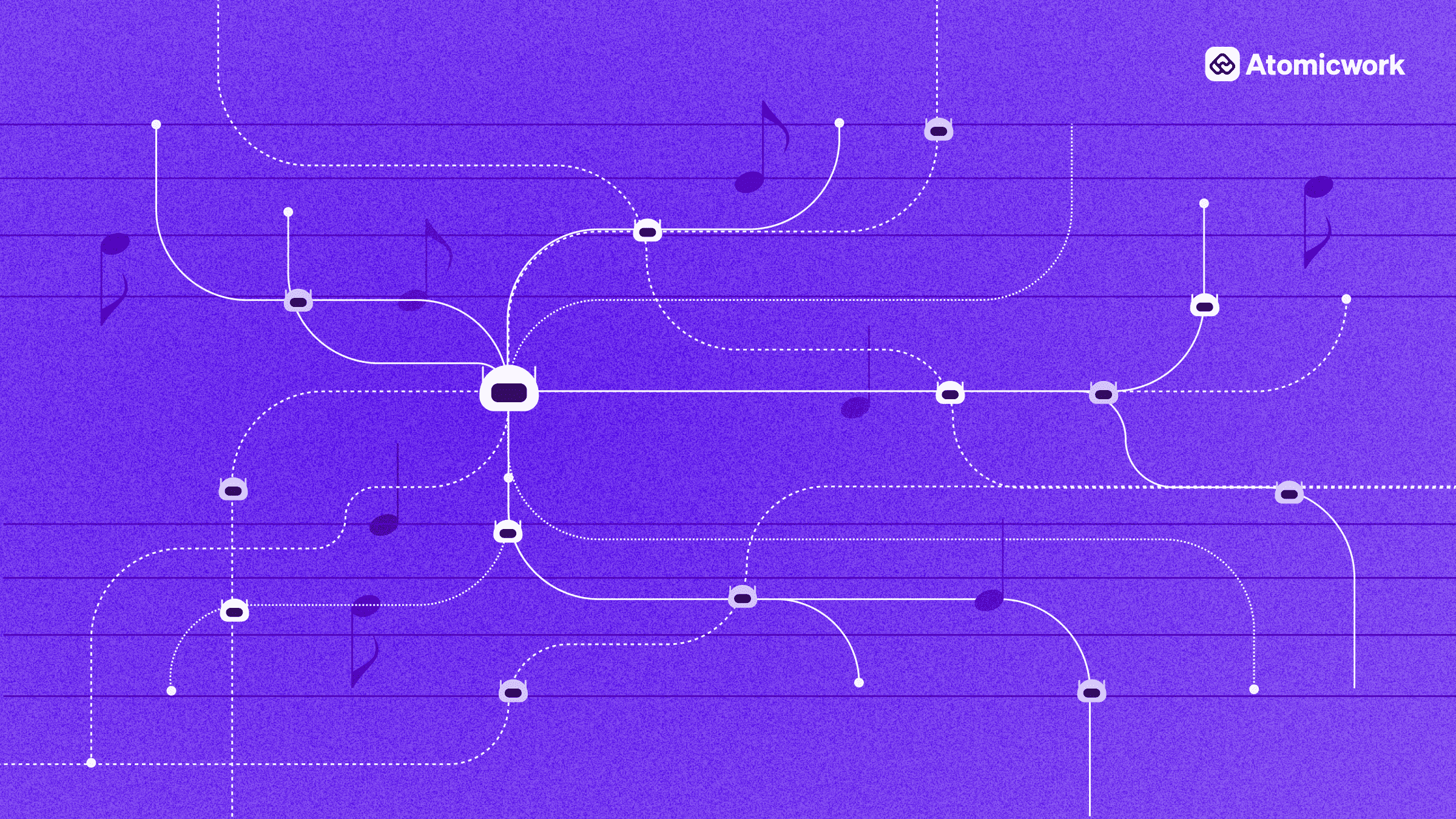

















AI agents are now capable of handling everyday operational tasks like access provisioning, service requests, and incident response with growing accuracy. But there’s a catch: while a single agent managing a specific task adds value, as organizations deploy more agents, seamless coordination becomes essential; without it, complexity quickly turns into chaos.
Think of it like skilled musicians playing different tunes without a conductor. Simply put, it’s not harmony, it’s noise.
Agent orchestration gives these individual AI agents context, purpose, and structure so they can work toward shared goals. For CIOs dealing with complex service environments and fragmented automation, this level of coordination is essential to scale smartly.
Deploying AI agents across an enterprise doesn’t automatically lead to better outcomes. Without seamless handoffs, shared context, and proper governance, workflows stall, compliance risks surface, and users grow frustrated by inconsistent or incomplete results.
According to Gartner, more than 40% of agentic AI initiatives will be abandoned by 2027 due to high costs, unclear ROI, or weak risk management. The issue is not the agents themselves; it’s rather the absence of coordination between them.
Rather than relying on isolated agents tackling siloed tasks, agent orchestration enables them to operate collectively toward common objectives, the foundation enterprises need to scale AI effectively and sustainably.
Let’s say Maya from the sales team needs to check how many leads were assigned to her this week.
Here’s what happens behind the scenes with Atomicwork’s orchestrated approach:
What appears to be a single, seamless interaction is, in reality, a carefully choreographed exchange between multiple agents and workflows, guided by a central ‘master’ agent. Each agent retains context, upholds security, and logs its actions into a unified audit trail.

This is the ‘agent of agents’ model: one intelligent layer orchestrating several specialised agents behind the scenes. For users like Maya, the experience feels effortless. For IT teams, it delivers scalable automation without compromising governance or security.
McKinsey calls this shift toward goal-driven agents that plan, remember, and act across workflows a transformative move in enterprise AI.
With orchestration, organizations gain:
Walmart offers a real-world example. The retailer streamlined dozens of fragmented AI tools into four unified ‘super agents’, each dedicated to customers, employees, engineers, and suppliers. Using the Model Context Protocol (MCP), these agents now exchange information effortlessly across systems, creating a cohesive and scalable automation framework.
According to KPMG, agentic AI could unlock up to $3 trillion in annual productivity gains, boosting Fortune 1000 companies’ EBITDA by more than 5%. However, such impact depends on thoughtful orchestration, not just the number of agents deployed.
For CIOs aiming to scale AI responsibly and effectively, a few foundational steps matter most:
1. Adopt collaboration standards: Frameworks like the Model Context Protocol (MCP) and Agent-to-Agent (A2A) communication enable agents to exchange not just data, but also intent, permissions, and state across systems.
2. Assess infrastructure readiness: Before scaling, evaluate whether your ITSM, CMDB, HRIS, and ticketing platforms can natively support agent frameworks.
3. Always think about context continuity: Ensure agents have access to live context, from HR systems and configuration databases to past incidents, so each knows exactly where a workflow stands.
4. Embed governance from the start: Build audit trails, approval gates, and access logs into orchestration layers upfront rather than treating them as add-ons later.
5. Ensure clear interaction rules: Define clear interaction rules: human-to-agent for approvals, agent-to-human for updates, and agent-to-agent for coordinated execution.
Over the next few years, a clear divide will emerge between organizations that simply deploy agents like standalone apps and those that compose them into adaptive, evolving workflows.
The former will keep running into integration and compliance bottlenecks. The latter will build compounding advantage, solving problems faster, adapting seamlessly to change, and freeing their people to focus on innovation.
That’s the real promise of agentic orchestration. And at Atomicwork, we’re building exactly that: an orchestration layer that lets enterprises scale AI without sacrificing governance, security, or user experience.
Our Chief Business Officer, Lenin Gali shares more on why CIOs need agent orchestration to scale AI effectively in his recent article on Forbes. Read!




